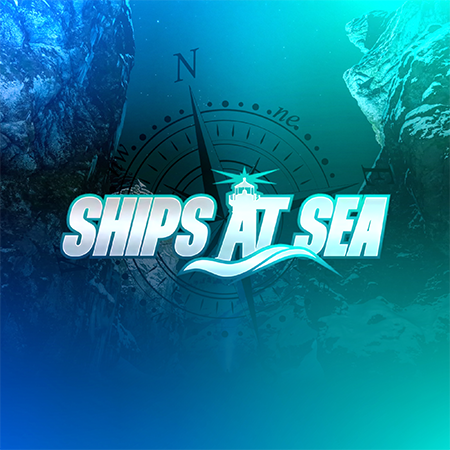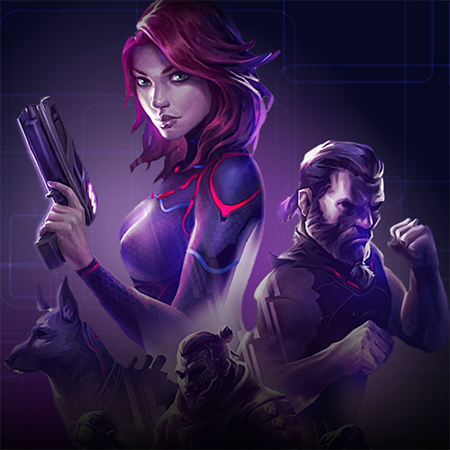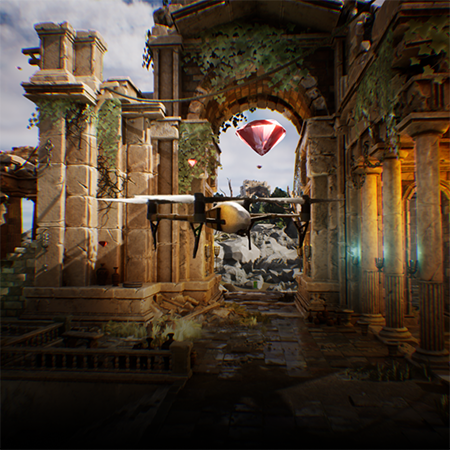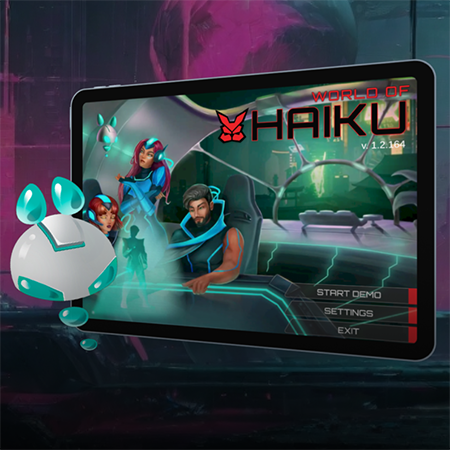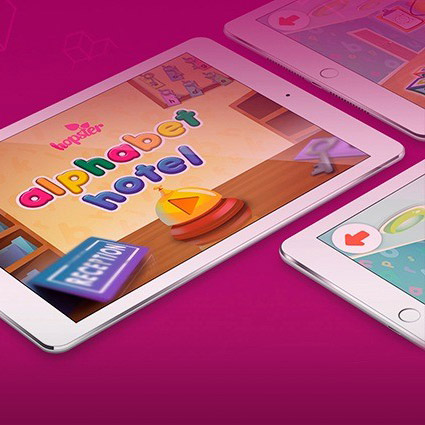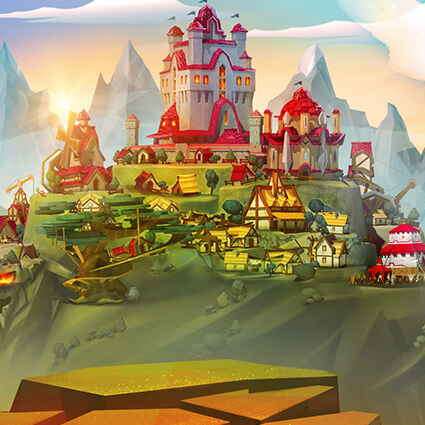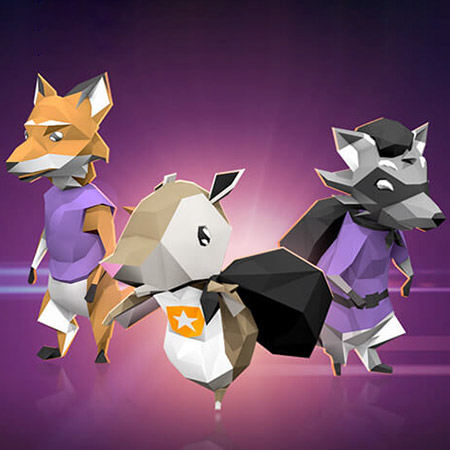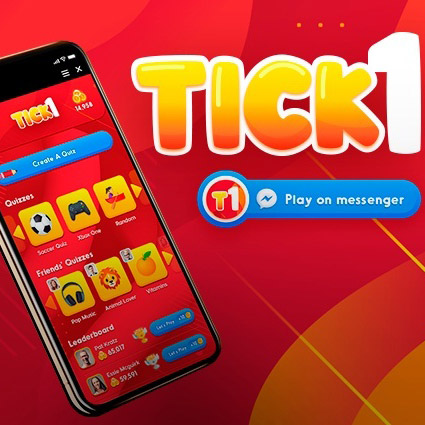Games for business now support marketing and growth, not only internal training. As brands compete for attention, interactive experiences create measurable engagement that converts visitors into customers. In practice, structured mechanics, analytics, and CRM integrations turn each play session into data that strengthens the next campaign.
Choosing the right platform begins with audience and reach. For broad consumer segments, mobile delivers loyalty features and easy re-engagement. Meanwhile, Roblox connects brands with younger communities through social play that spreads organically. For fast launches, WebGL runs in the browser without installation, making it ideal for landing pages and event microsites. When memorability matters, VR and AR provide premium showroom and expo experiences.
Full-cycle game development ensures every stage, from concept to post-launch optimization, aligns with clear goals. Effective delivery depends on alignment with KPIs. From the first concept discussion to post-launch optimization, teams track sign-ups, repeat sessions, and revenue lift. As a result, every feature serves a business goal, rather than being purely for entertainment.
The Role of Games in Modern Business Strategy
Games are becoming a central element of business strategy, supporting training, engagement, and data-driven decision-making. Companies rely on structured gameplay to reinforce learning, encourage collaboration, and analyze user performance. Industries such as retail, manufacturing, and finance implement business games to increase efficiency and employee retention.
Top gamification companies focus on creating solutions that align with measurable objectives and integrate seamlessly with existing workflows. Executives view these solutions as practical tools rather than entertainment, prioritizing their scalability and return on investment. Organizations use them to strengthen leadership programs, deliver safety training, and create consistent customer engagement systems.
What Makes Games a Powerful Business Tool
Games for business events and internal programs provide measurable results through structured learning paths, analytics, and user engagement metrics. They encourage active participation and provide direct feedback, creating a more effective environment for knowledge retention compared to traditional training.
Here are some of the most impactful strengths that businesses value:
- Employee engagement. Games improve attention, motivation, and knowledge application.
- Data-driven insights. Tracking player performance identifies skill gaps and operational inefficiencies.
- Adaptability. Games can be updated quickly to match regulatory changes or organizational goals.
- Cross-platform use. Solutions are often accessible via web, mobile, and desktop devices.
Business leaders adopt games for business meetings to introduce complex topics in a clear, structured way, reducing training time and increasing comprehension. Well-designed experiences replace static presentations with interactive scenarios that simulate real-world processes. Companies investing in gamification achieve higher engagement levels, streamlined onboarding, and better training outcomes.
Understanding Game Mechanics That Drive Results
Effective business game design focuses on mechanics that motivate users and align with organizational objectives. Scoring systems, progress tracking, and structured challenges ensure participants stay engaged while achieving measurable outcomes.
Below is a breakdown of mechanics that consistently deliver measurable business impact:
- Clear objectives. Defined goals guide user focus and performance tracking.
- Progressive challenges. Difficulty increases gradually, maintaining motivation.
- Instant feedback. Players adjust decisions quickly, improving skill retention.
- Reward systems. Recognition fosters continued participation and loyalty.
Developers collaborate with industry experts to ensure every element serves a specific function rather than entertainment alone. Mechanics like leaderboards and performance dashboards create competition and transparency, reinforcing accountability.
Companies implementing business games see improved collaboration, faster training cycles, and measurable ROI. Integrating these features with existing systems allows organizations to analyze outcomes, fine-tune strategies, and standardize training quality.
Global Market Adoption and Business Impact
Enterprises worldwide are increasing investments in serious games due to their ability to scale, deliver measurable results, and reduce training costs. The best game studios focus on projects that support specific sectors, including healthcare, logistics, and finance, offering solutions customized for local regulations and cultural requirements.
The following points explain why adoption rates continue to grow:
- Scalable design. Companies deploy solutions across multiple regions with minimal adjustments.
- Cost efficiency. Digital training reduces reliance on in-person sessions and printed materials.
- Regulatory alignment. Games adapt quickly to industry standards, ensuring compliance.
- Analytical depth. Built-in metrics support performance reviews and long-term planning.
Adoption rates are rising as businesses recognize the practical benefits of digital learning and engagement platforms. The global market continues to expand, supported by cloud-based infrastructure and AI-driven analytics. Companies increasingly choose full-cycle game development services to create experiences that align closely with business goals.
Why Businesses Develop Games for Marketing
Many businesses now create games not just for entertainment, but also for a measurable marketing impact. Interactive content enables brands to move beyond traditional advertising by engaging users in actions that foster awareness and loyalty. Through our professional work, we have found that gamified campaigns achieve higher completion rates and lower acquisition costs compared to static promotions.
Marketing teams often use business games to:
- Promote new products. Customers learn about key features while playing.
- Increase retention. Reward systems encourage users to return regularly.
- Gather insights. Real-time analytics highlight how players behave and what attracts attention.
- Strengthen loyalty. In-game points, badges, and discounts turn engagement into repeat sales.
Companies treat such campaigns as measurable experiments where success is tracked through participation and conversion data. Our benchmarking results indicate that integrating games into marketing raises average engagement time by more than half compared to traditional campaigns.
Choosing the Right Platform for Your Marketing Game
Selecting the correct platform defines audience reach, cost, and potential ROI. From the projects we delivered, it has become clear that every platform brings distinct advantages.
| Platform | Typical Audience | Budget Range | Use Case |
| Mobile | Broad consumer base | Mid to high | Loyalty programs, branded mini-games |
| Roblox | Younger community | Moderate | Social engagement, youth marketing |
| WebGL | Event visitors, desktop users | Low to mid | Trade shows, product demos |
| VR/AR | Premium buyers, corporate clients | High | Expo booths, showrooms, immersive training |
Businesses should match platform choice with their marketing goal. Mobile and Roblox attract scalable audiences at reasonable budgets, while VR and AR serve premium campaigns where emotional impact outweighs cost.
Three factors help define the correct option:
- Audience fit. Match demographics and behavior to platform norms.
- Budget alignment. Balance scope with achievable ROI.
- Longevity. Consider how easily content can be updated post-launch.
According to our internal analysis, companies that make early platform decisions reduce post-production costs by up to 30%. Therefore, choosing between launching on Roblox and a mobile app involves a trade-off between reach and control over infrastructure. Launching on Roblox provides immediate access to a massive, engaged user base, particularly among younger demographics, with built-in development tools, social features, and monetization systems, which significantly lower the barrier to entry and time-to-market.
However, this comes at the cost of limited creative control, a substantial revenue share taken by the platform, dependence on Roblox's shifting policies and technical constraints, and potentially less brand-building opportunity outside of the platform's ecosystem. Conversely, developing a mobile app (for iOS/Android) grants complete creative control, allows for a tailored user experience, greater flexibility in monetization strategies, and enables direct ownership of the user data and brand identity.
The cons include a much higher initial investment in development, marketing, and infrastructure, the challenge of acquiring users from scratch, and still having to contend with the mobile app store's (Apple/Google) review process and revenue cuts. Ultimately, Roblox is ideal for rapid prototyping and tapping into a pre-existing community. At the same time, a mobile app is better for long-term brand building and maximum control over the product.
Benefits of Using Business Games Across Industries
Business games offer measurable benefits across various sectors, providing scalable tools for employee training, marketing, and customer retention. Companies use them to unify workflows, simplify onboarding, and strengthen communication strategies. Interactive learning and engagement systems help organizations maintain consistency in brand representation and customer experiences.
Solutions are adaptable, supporting use cases in retail, hospitality, healthcare, and finance. Industry leaders invest in these tools for their ability to deliver practical results while reducing costs and standardizing processes. Teams leverage business games to analyze user data, improve engagement metrics, and implement real-time updates that align with evolving requirements.
Strengthening Brand Awareness and Customer Loyalty
Interactive business games support marketing teams by creating highly personalized experiences that improve brand recognition and customer trust. Businesses integrate solutions into campaigns, retail environments, and online platforms to boost interaction rates and track engagement metrics. Companies in sectors like entertainment and hospitality often implement 3D and AI avatars in casino environments and other gamified systems to strengthen brand identity and maintain user interest.
Below are strategies that consistently increase loyalty and brand recall:
- Interactive branding. Games include custom visuals, logos, and messages tailored to brand standards.
- Customer feedback loops. Built-in surveys and rewards programs encourage direct engagement.
- Personalization features. Dynamic content adjusts based on user preferences and behavior.
- Cross-channel integration. Games operate seamlessly across apps, websites, and physical locations.
Gamified campaigns drive repeat purchases, build stronger emotional connections, and provide measurable marketing ROI. Businesses that adopt customer-focused solutions see higher retention rates and more consistent revenue growth.
Driving Lead Generation and Consumer Engagement
Games for business are powerful marketing assets because they encourage interaction while capturing actionable data. Organizations deploy them during trade shows, social campaigns, and online events to attract potential customers and collect performance insights. Businesses often integrate reward systems to motivate sign-ups or purchases.
Below are engagement tactics companies use to achieve measurable results:
- Gamified promotions. Incentives like badges or discounts increase participation and lead capture.
- Data collection. Games track user behavior, helping refine future campaigns.
- Social features. Sharing options extend reach organically and create brand advocates.
- Real-time analytics. Marketing teams adjust content quickly based on performance data.
Games used for promotional purposes deliver measurable conversion improvements and cost savings over traditional campaigns. Marketers rely on them to reduce advertising expenses while generating highly qualified leads. Data collected from gameplay sessions informs strategic planning, helping brands design campaigns with higher impact.
Improving Team Collaboration and Internal Communication
Companies rely on business games to strengthen teamwork, encourage peer learning, and simplify communication channels. Training games simulate real-world challenges, enabling employees to practice decision-making in controlled environments. Organizations that prioritize collaboration often deploy multiplayer systems to create a shared learning experience.
Key approaches to improving internal communication through games include:
- Scenario-based challenges. Employees practice responses to realistic business problems.
- Performance dashboards. Teams track achievements, share feedback, and identify improvement areas.
- Role-based simulations. Staff members gain a clear understanding of cross-department responsibilities.
- Consistent reporting. Managers receive structured data for coaching and goal-setting.
Engaged employees communicate more effectively and demonstrate stronger problem-solving skills. Business games provide a safe space to test workflows, reducing operational risks and enhancing productivity. Organizations that adopt game-based communication tools report higher employee satisfaction and reduced turnover rates.
Creating Memorable Experiences That Build Retention
Companies in competitive industries focus on experiences that leave lasting impressions, and gamified solutions are central to this effort. Developers create platforms that emphasize personalization, immersive graphics, and smooth functionality, all designed to retain users over time.
Below are techniques that help organizations build strong customer relationships:
- Progress tracking. Returning players see clear advancement, motivating them to continue.
- Tiered rewards. Structured incentives encourage ongoing engagement and long-term loyalty.
- Immersive visuals. High-quality graphics improve satisfaction and perceived brand value.
- User-driven customization. Customers shape their experience, making content more meaningful.
Retention-focused games strengthen user trust, simplify loyalty program management, and reduce acquisition costs. Businesses rely on analytics from these systems to understand preferences, improve product offerings, and predict purchasing behavior. Data-driven personalization enhances user satisfaction, ensuring customers remain engaged long after initial interaction.
Need a game for business? Let’s get in touch, we can help.
Game Types That Deliver Value for Business
Organizations integrate game-based solutions into marketing, training, and customer engagement strategies to achieve measurable goals. Business games are tailored to suit each context, from product promotions to corporate training programs. They provide analytics to guide decisions and ensure resources are used effectively.
Companies choose solutions that align with objectives, whether improving brand loyalty or streamlining employee onboarding. Flexible design options support integration with multiple platforms, making these tools adaptable to various industries. Developers emphasize functionality over entertainment, ensuring every feature contributes to performance metrics, compliance, and measurable results.
Xmas ARchy: A Festive AR Portal Experience

Program-Ace created Xmas ARchy, an augmented reality portal app that brings a festive interactive world to users. Built with Unity, ARKit, and ARCore, it showcases innovative markerless AR technology, high-quality visuals, and potential applications in marketing, entertainment, and more.
Gamified Marketing Campaigns and Product Launches
Marketing teams utilize game-based campaigns to foster stronger connections with customers and encourage their participation. Launching a product through interactive experiences offers a cost-effective way to increase visibility and measure results. Gamified elements capture attention while collecting valuable data to refine strategies.
Here are some approaches that ensure campaigns achieve measurable engagement:
- Branded mini-games. Companies introduce products memorably and interactively.
- Timed competitions. Limited-time offers increase urgency and drive conversions.
- Interactive quizzes. Customers engage with product features while sharing information.
- Leaderboard rankings. Competitive elements encourage ongoing participation.
Campaigns built with these mechanics help brands reduce ad spend, increase organic reach, and improve conversion rates. The focus is on targeted engagement, ensuring participants gain value from every interaction. Businesses also rely on analytics to track performance and make adjustments in real time.
Serious Games for Education and Awareness
Organizations use serious games to deliver consistent, measurable training programs across diverse teams. Instead of only presenting facts, they replicate real challenges to help employees build skills in practical scenarios. Training departments appreciate their scalability, while compliance teams rely on their ability to track performance against regulatory standards.
Serious games for business achieve their goals through:
- Interactive compliance simulations. Employees experience real-world scenarios that reinforce regulations.
- Scenario-based decision-making. Staff practice responses to situations without real-world risk.
- Data-focused evaluation. Managers receive actionable reports on knowledge retention.
- Repeatable modules. Lessons can be replayed for deeper understanding and better retention.
Such an approach minimizes training costs, shortens onboarding, and standardizes knowledge across global teams. Healthcare, finance, and energy sectors increasingly invest in serious games to ensure workers meet operational and safety requirements.
Haiku: Cybersecurity Training Through an Interactive Game

Game-Ace enhanced the Haiku cybersecurity training game with optimized UI, faster loading, and seamless pop-up management. The team enhanced performance, developed custom tools, and delivered a practical platform that enables organizations to strengthen their cybersecurity skills effectively.
Interactive Experiences for Events and Trade Shows
Gamified experiences at trade shows replace static product displays with engagement-focused content. Companies adopt VR games for business to create memorable interactions, demonstrating products in a way that captures attention and encourages participation. Instead of a bulleted format, here's a concise flow of strategies:
Trade show booths benefit from on-site leaderboards to drive competition and keep attendees engaged. Custom-branded challenges allow participants to interact directly with services or products, offering a deeper understanding of brand value. Companies introduce instant rewards and incentives to encourage participation while gathering qualified leads. Post-event, personalized digital follow-ups help maintain contact and boost conversion rates.
Organizations that invest in interactive content during events see higher engagement levels, better lead quality, and stronger brand recall. Gamification transforms trade shows from passive displays into active learning environments, creating measurable business outcomes.
Loyalty Programs and Gamified Rewards Systems
Trade shows and corporate events are ideal platforms for brands to create lasting impressions, and interactive games elevate that impact. Companies are replacing static displays with dynamic experiences that encourage attendees to spend more time engaging with products and services. VR games for business are especially effective because they showcase offerings in a way that's both practical and memorable.
Brands often introduce on-site leaderboards to spark competition, creating a reason for visitors to participate actively. Branded challenges immerse attendees in scenarios that demonstrate value, while instant rewards such as vouchers or digital perks increase conversion opportunities. Post-event strategies include sending personalized content based on participant behavior, ensuring follow-up interactions are relevant and effective.
Gamified event experiences result in higher lead quality, improved visitor retention at booths, and stronger brand recognition. Organizations that adopt these tactics can measure engagement in real time, gaining insight that informs future campaigns and helps optimize event spending.
How Companies Use Games to Solve Key Challenges
Organizations are integrating, for example, WebGL games, mobile apps, and cross-platform solutions to address operational and engagement challenges. From training employees to building stronger customer relationships, games are chosen for their ability to deliver measurable results. Businesses focus on mechanics that motivate participation while gathering actionable data.
Marketing, HR, and product teams benefit from solutions that scale globally while remaining easy to update and maintain. Interactive platforms create a consistent experience across devices, ensuring accessibility for distributed teams and customers alike. Companies use game-based approaches to simplify workflows, reinforce loyalty programs, and optimize communication strategies.
Engaging Remote and Hybrid Teams
Managing distributed teams requires solutions that promote collaboration, engagement, and accountability without increasing overhead. Companies integrate game-based systems into daily workflows to replicate the benefits of in-person teamwork. Remote employees participate in interactive training sessions, competitive challenges, and role-based simulations that encourage communication.
The essential approaches include:
- Gamified performance tracking. Employees receive immediate feedback and clear goals.
- Virtual collaboration rooms. Teams engage in interactive exercises accessible from any location.
- Recognition systems. Badges, rankings, and rewards reinforce contributions.
- Skill development challenges. Structured activities maintain consistent learning across teams.
Organizations report stronger retention rates and higher productivity when employees feel connected through shared digital experiences. Games provide measurable insights into performance while reducing communication gaps.
Attracting and Retaining Customers
Brands are shifting from static promotions to interactive experiences that increase engagement and loyalty. Business game campaigns allow customers to explore products, earn rewards, and connect with companies in a more meaningful way. Interactive content also makes campaigns easier to measure, helping marketers refine strategies.
- Gamified loyalty apps. Customers track progress and unlock exclusive offers.
- Personalized content journeys. Experiences adjust dynamically based on user preferences.
- Social sharing incentives. Participants promote brands organically through achievements.
- Time-sensitive competitions. Urgency drives participation and conversion rates.
Customers are more likely to remain engaged with a brand that delivers value and entertainment on one platform. Game mechanics strengthen loyalty programs, increase repeat purchases, and reduce customer acquisition costs over time.
Educating Consumers About Products or Services
Educating buyers is more effective when learning is an interactive process. Companies use business games to simplify product demonstrations, answer common questions, and guide purchase decisions. Games transform lengthy documentation into hands-on experiences, enabling customers to see the benefits of a product directly.
Approaches include immersive tutorials, knowledge tests with rewards, and scenario-based walkthroughs that showcase features. Metrics collected from these activities help companies refine their messaging and identify areas of interest. A strong emphasis on clarity and interactivity improves trust, ensuring that buyers feel informed rather than overwhelmed. Businesses that adopt educational gaming strategies consistently see reduced support inquiries and higher satisfaction rates.
Increasing Participation in Corporate Initiatives
Internal campaigns often struggle to gain attention, especially in large organizations. Gamified systems address this challenge by creating clear goals, offering recognition opportunities, and establishing effective feedback loops. Instead of simply announcing initiatives, companies encourage participation through interactive activities that make objectives tangible.
Employees participate in challenges tied to diversity programs, wellness initiatives, and sustainability projects. Leaderboards show progress transparently, while point-based systems reward consistent involvement. Managers use collected data to identify departments that excel and provide targeted support where engagement is lower. The result is an environment where employees are more invested in company-wide goals, which improves initiative success rates and fosters a stronger corporate culture.
Steps to Building a Successful Business Game
A successful business game requires structured planning, strong alignment with organizational goals, and attention to scalability. Companies begin by defining their objectives clearly and understanding the audience that will use the game. Design choices, platforms, and technology stacks are informed by these insights to ensure the product delivers measurable results.
Developers and business teams collaborate closely to create mechanics that support training, marketing, or engagement strategies. Launch planning is also essential, as games need clear promotion plans to achieve reach and adoption. A well-executed project offers long-term value by combining strategic design with data-driven optimization.
Identifying Objectives and Target Audiences
Business games succeed when they are created with specific outcomes in mind. Companies start by clarifying objectives, such as improving onboarding efficiency, boosting brand loyalty, or driving sales. Each goal determines the game mechanics, content, and delivery format. Audience segmentation follows, helping teams understand what motivates employees, partners, or customers.
| Focus Area | Purpose |
| Objectives | Define measurable outcomes and success metrics. |
| Audience segmentation | Identify user needs, skill levels, and engagement triggers. |
| Content relevance | Ensure materials align with business priorities. |
| Accessibility | Guarantee cross-device usability for all participants. |
Strategic planning at this stage reduces production risks and ensures resources are allocated effectively. Clear audience analysis also helps create personalized features that improve satisfaction and outcomes.
Crafting Game Design That Matches Business Goals
Game mechanics must align directly with company priorities, not just entertainment. Developers and business teams collaborate to create experiences that reinforce brand messaging, training objectives, or marketing efforts. Successful designs strike a balance between simplicity and depth, providing players with clear goals while keeping them engaged.
Design strategies that deliver results include:
- Goal-oriented challenges. Mechanics emphasize completing tasks that reflect real-world objectives.
- Feedback-driven systems. Players receive actionable guidance at every stage.
- Balanced complexity. Gameplay remains easy to learn but includes enough depth to sustain interest.
- Scalable content. Teams update or expand materials as business needs evolve.
Organizations treat design as a strategic investment, ensuring every choice, from visuals to scoring systems, supports a defined outcome. Effective design creates value long after launch by providing actionable data and measurable results.
Selecting the Right Platforms and Technologies
Choosing platforms and technologies determines how accessible and sustainable a business game will be. Companies evaluate factors such as device compatibility, network requirements, and integration with existing tools. Web-based solutions are popular due to their scalability and ease of deployment, while mobile apps suit teams that prioritize flexibility.
Important selection criteria:
- Platform reach. Games should work across web, desktop, and mobile devices.
- Technology stack. Frameworks like Unity or Unreal ensure strong performance.
- Integration. Compatibility with HR systems, CRMs, or analytics platforms is essential.
- Maintenance. Long-term support and updates must be cost-effective.
Many organizations prefer WebGL games for ease of access, as they run without installation. Similarly, roblox game development offers cross-platform reach, enabling branded business games accessible on PC, mobile, and web. Technology planning ensures that every user has a seamless experience regardless of location or device, reducing barriers to adoption and increasing engagement.
Launch Strategies for Maximum Reach
Even the best-designed game needs a strong rollout strategy to gain traction. Companies plan launches carefully, combining marketing, internal communication, and feedback collection to maximize participation. Testing phases often involve a small group of users to refine gameplay before release.
Successful strategies include pre-launch announcements to create anticipation, internal training for managers to guide adoption, and promotional campaigns for external audiences. Metrics like sign-ups, engagement rates, and feedback scores help measure initial success and inform updates. Organizations also set timelines for feature expansions to sustain interest over time. A structured launch not only improves early engagement but also lays the groundwork for long-term success and measurable ROI.
Measuring Success and ROI in Business Games
Measuring outcomes is essential for understanding whether a business game meets its goals. Companies rely on data to evaluate user engagement, knowledge retention, and cost efficiency. By defining success metrics early, organizations ensure their investment delivers measurable returns.
Analytics from gameplay sessions provide insight into areas for improvement, helping teams refine future campaigns and increase value. Comparing performance against traditional methods also highlights the impact of gamified approaches. This structured evaluation process supports ongoing optimization, aligning every feature with business priorities and maintaining long-term effectiveness.
Setting Clear KPIs for Engagement and Growth
Companies track success by defining precise key performance indicators (KPIs) before launch. Here's how organizations can measure growth and engagement effectively:
- Participation rate. Measures how many users join and complete the game.
- Time spent. Tracks engagement levels by monitoring play duration per session.
- Completion metrics. Shows progress through challenges and overall retention.
- Knowledge accuracy. Assesses learning effectiveness through quizzes or tests.
- Conversion rate. Evaluates how gameplay translates into desired actions, such as purchases or sign-ups.
- Feedback scores. Collects user ratings and comments to measure satisfaction.
- Cost per user. Analyzes the financial efficiency of the program over time.
- Repeat participation. Indicates user loyalty and interest in returning for updates.
Tracking KPIs creates a clear understanding of ROI and helps justify budget allocation. Regular reviews enable teams to identify trends and adjust their strategies promptly.
Analyzing User Data to Optimize Future Campaigns
User data is essential for refining business games after launch. Analytics reveal patterns in engagement, content performance, and technical usability. Developers and marketing teams evaluate where users drop off, identify which challenges are too easy or too complicated, and assess how interactive elements impact retention.
Detailed reports highlight what resonates with target audiences, allowing organizations to invest in features that provide the most value. Teams also track demographic information and device preferences to optimize accessibility. Predictive modeling helps forecast participation rates and ROI, ensuring future campaigns perform better with fewer trial-and-error costs. Ultimately, continuous analysis transforms a one-time launch into a scalable solution that evolves with the company's needs.
Comparing Traditional vs. Gamified Business Approaches
| Aspect | Traditional Methods | Gamified Approaches |
| Engagement | Limited to passive participation. | High interactivity keeps users motivated. |
| Data collection | Basic surveys and manual reporting. | Real-time analytics and behavior tracking. |
| Training effectiveness | Relies on static content and presentations. | Interactive lessons improve retention and application. |
| Scalability | Requires extensive resources for expansion. | Easy to update and deploy globally. |
| Cost efficiency | Higher long-term expenses for instructors and travel. | Lower costs through digital delivery and repeatability. |
| Brand perception | Less memorable experiences. | Stronger engagement builds lasting impressions. |
| Measurement | Slow, often lacking actionable metrics. | Instant reporting supports decision-making. |
Common Obstacles and Practical Solutions in Developing Games for Business
Developing games for business involves challenges that require careful planning and execution. Teams often face budget limitations, technical complexities, and the need to balance engaging gameplay with strategic objectives. Addressing these challenges early ensures smoother production and long-term value. Solutions include phased development plans, clear ROI forecasting, and integrating technologies that reduce maintenance costs.
Budget Constraints and Scaling Tactics
Budget limitations are a frequent barrier when developing a business game, especially for smaller organizations. Companies manage costs by breaking projects into clear phases, starting with minimal viable features before expanding. Outsourcing specific components, such as art production or analytics integration, also reduces overhead.
Effective cost-saving strategies:
- Modular development. Prioritize essential features first, adding advanced content later.
- Cloud-based hosting. Lower infrastructure costs and simplify global deployment.
- Reusable assets. Design graphics, scripts, and game mechanics that can be repurposed.
- Efficient QA workflows. Reduce bugs early to avoid expensive post-launch fixes.
Planning realistic budgets alongside clear ROI metrics ensures teams spend resources effectively. Scalable solutions enable companies to expand their product offerings over time without incurring significant initial investments.
Balancing Fun with Business Value
Games for business must be enjoyable but still meet organizational goals. Developers focus on designing experiences that are easy to learn yet meaningful, ensuring gameplay mechanics reinforce key lessons or behaviors. This balance comes from understanding the target audience, using analytics to track results, and aligning design with business objectives.
Teams often combine engaging features, like progress tracking and rewards, with structured content that promotes real-world skills. User testing plays a key role in achieving balance, as it provides early feedback on both engagement and effectiveness. Clear storytelling, accessible controls, and a focus on measurable outcomes prevent games from becoming purely recreational. Companies that successfully integrate entertainment with strategic value create tools that employees and customers enjoy using while delivering tangible ROI.
Overcoming Technical and Integration Barriers
Technical challenges often delay launches or limit adoption. Businesses address these risks by investing in platforms that support seamless integration with CRMs, HR software, or analytics dashboards. Cloud deployment ensures easy updates, while API-based systems reduce manual work. AI game assistant integration also improves efficiency by automating tutorials, analyzing player behavior, and offering personalized recommendations.
Teams evaluate infrastructure needs early, choosing scalable frameworks like Unity or Unreal Engine for flexibility. Web-based formats such as WebGL simplify distribution, especially for organizations with hybrid or remote teams. Regular compatibility testing across devices prevents accessibility issues. IT teams collaborate closely with developers to ensure smooth data flow, high security, and stable performance.
Innovations Shaping the Future of Business Games
The business gaming sector is evolving rapidly, driven by technologies that enhance personalization, scalability, and overall impact. AI-driven analytics offer more profound insights into user behavior, while immersive platforms like VR and AR enhance training and marketing interactions. Cloud-based systems enable companies to deploy solutions quickly and maintain them across global teams.
Organizations investing in innovation are focusing on flexibility, real-time feedback, and cross-platform compatibility to create experiences that adapt to user needs. These advancements ensure that business games remain powerful tools for enhancing engagement, retention, and measurable business outcomes.
Artificial intelligence plays a central role in delivering individualized experiences for employees and customers. AI analyzes user actions, skill levels, and preferences, adjusting game difficulty and content accordingly. Dynamic challenges ensure players remain motivated while learning effectively. Businesses benefit from real-time analytics, enabling managers to track performance and address gaps immediately.
AI also supports automated content generation, reducing manual development time and allowing frequent updates. Recommendation systems guide users toward relevant training paths or product information, increasing satisfaction. Predictive analytics helps companies anticipate trends, improving future campaigns. Personalization powered by AI creates higher engagement rates and ensures games remain relevant to evolving needs.
Immersive technologies are transforming the way companies deliver training and marketing experiences. Virtual reality provides fully interactive environments for safety programs, leadership training, and product demonstrations. Augmented reality adds layers of information to real-world settings, while mixed reality blends both approaches to deliver flexible solutions.
Businesses deploy VR games to simulate high-risk environments safely, allowing employees to practice decision-making without real-world consequences. AR-based product demonstrations enable customers to explore items from any location. Mixed reality solutions support collaborative learning, allowing the participants to interact with virtual elements together.
Cloud-based platforms allow companies to manage and distribute business games at scale, offering accessibility from desktops, mobile devices, and web browsers. Cross-platform compatibility ensures employees and customers can use the same product regardless of device, creating consistency.
Key benefits include streamlined deployment, faster updates, and simplified maintenance. Organizations use cloud services to host analytics dashboards, automate patching, and integrate third-party tools. Cross-platform design also supports hybrid work models, making training and engagement programs more inclusive. Development teams rely on frameworks that prioritize flexibility, ensuring business games remain effective over time and can be expanded easily.
From Idea to Pitch: Turning Business Concepts into Playable Strategies
Some companies approach us with only a campaign concept, while others already have detailed scripts in place. In both cases, our team helps transform ideas into structured pitches, providing recommendations on platform, audience, and timeline. Partner feedback indicates that this early planning stage often determines the final ROI.
The preparation process usually involves:
- Clarifying goals. We identify what your business aims to achieve: sales lift, awareness, or customer loyalty.
- Evaluating scope. Our experts estimate technical requirements and delivery milestones.
- Prototyping concepts. Early visuals or mini-levels illustrate how the idea functions in play.
- Budget calibration. Transparent cost breakdowns connect investment to expected KPIs.
Once the proposal is ready, you will receive a concise roadmap that shows how a playable experience can serve your business purpose. Companies often proceed to full production after this step because the pitch has already demonstrated measurable potential.
Ready to move forward? Contact the Game-Ace team with your idea, and we will help shape a concept that precisely fits your audience, budget, and campaign goals.
Choosing the Right Development Partner
Selecting a development partner is critical for ensuring your investment in business games delivers measurable results. Companies should evaluate technical expertise, industry knowledge, and the ability to manage projects end-to-end. A strong partner provides guidance during concept planning, game design, platform selection, and launch. Clear communication, proven workflows, and a portfolio of successful projects are signs of a reliable studio.
1. Evaluating Expertise and Case Studies
An experienced custom game development company demonstrates its skills through a diverse portfolio and real-world case studies. Organizations should review examples of past work that align with their goals, such as gamified training systems, loyalty programs, or large-scale marketing campaigns.
Key elements to assess include project scope, technical complexity, and the variety of platforms used. References and testimonials from past clients offer valuable insights into the quality of communication and project management. Companies benefit most from a partner that provides both design creativity and technical precision. A studio with cross-industry experience can adapt more quickly, creating solutions that meet unique requirements while remaining scalable and cost-effective.
2. Importance of Post-Launch Support and Analytics
Post-launch support determines how well a game performs over time. Reliable developers monitor stability, deliver patches, and add new features to keep solutions relevant. Built-in analytics allow organizations to evaluate user activity, identify challenges, and refine content based on data.
Businesses also benefit from transparent reporting, which shows progress toward engagement and ROI goals. Ongoing optimization improves performance while lowering costs associated with future upgrades. Support teams that respond quickly reduce downtime, helping organizations maintain user trust and meet operational deadlines. A strong post-launch plan extends the lifespan of every game investment, turning it into a long-term business asset.
3. Building a Long-Term Collaboration Strategy
Long-term relationships with development partners reduce production risks and create more consistent outcomes. Companies that invest in a strategic partnership benefit from faster iteration, predictable pricing, and better alignment with business objectives. Collaboration should include regular performance reviews, roadmap planning, and structured feedback loops to improve every release.
Development partners that understand your brand and industry needs can create scalable solutions over time. Organizations that treat game development as an ongoing process rather than a one-time project see higher ROI and stronger market impact. A long-term strategy ensures every update, campaign, or training program builds on previous successes.
Games for Business with the Game-Ace Team
Game-Ace is a trusted custom game development company with experience in creating solutions for training, marketing, and customer engagement. Our team delivers full-cycle game development services, guiding clients from concept through launch and ongoing support. We specialize in cross-platform compatibility, analytics integration, and scalable features that drive measurable results. By combining creativity with technical expertise, we create business games that meet industry requirements and user expectations.
Ready to transform your training or marketing strategies with interactive solutions? Contact us to discuss your project, explore case studies, and plan a game that delivers lasting value.
 Key Trends Shaping Gamification in Recruitment for 2026 and Beyond
Key Trends Shaping Gamification in Recruitment for 2026 and Beyond  How to Create Crypto Casino Games the Right Way
How to Create Crypto Casino Games the Right Way  AI Recruitment Games: From Real-Time Assessments to Better Hiring Outcomes
AI Recruitment Games: From Real-Time Assessments to Better Hiring Outcomes  How to Design Learning Games for Kids That Teach Real-World Skills
How to Design Learning Games for Kids That Teach Real-World Skills  Level Up Learning: How Game-Based Learning Drives Real Results
Level Up Learning: How Game-Based Learning Drives Real Results 











